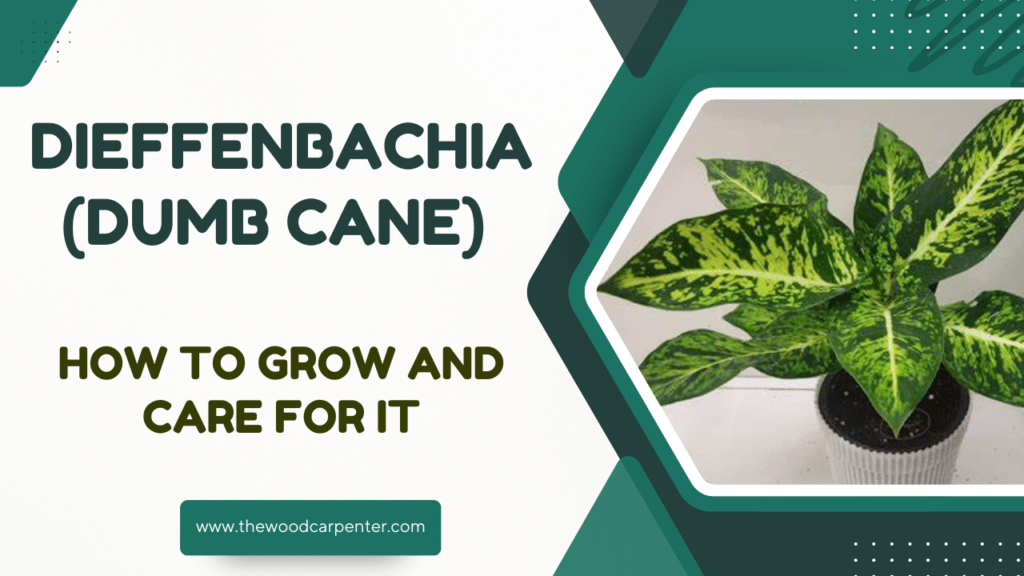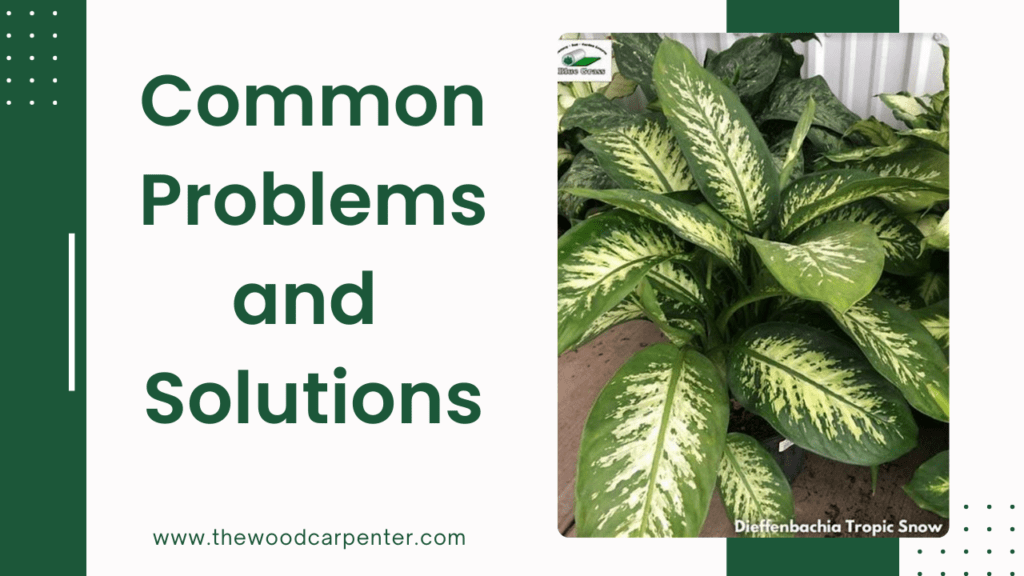
Dieffenbachia, also known as Dumb Cane, is a common houseplant loved for its big, beautiful leaves and low-maintenance care. It’s great for adding a touch of green to your home or office.
Here’s an easy-to-follow guide to help you grow and care for your Dieffenbachia, along with answers to common questions.
Light Requirements
Dieffenbachia grows best in bright, indirect light. This means it should be near a window that gets sunlight, like one facing east or west, but the sun shouldn’t hit the leaves directly. Too much direct sun can burn the leaves and make their colors fade.
If the plant is in a darker area, it can still live, but it will grow slower and may look thin or stretched out. The leaf patterns might also become less colorful. To help it grow evenly, turn the plant every few days so all sides get some light.
Temperature and Humidity
Temperature: Dieffenbachia likes normal indoor temperatures between 60–80°F (15–27°C). Keep it away from cold drafts or places where the temperature drops below 55°F (13°C), as cold air can harm the leaves.
Humidity: Since it’s a tropical plant, Dieffenbachia enjoys moderate to high humidity. Regular indoor humidity is usually okay, but in dry months (like winter), you can help by:
- Lightly misting the leaves,
- Using a humidifier, or
- Placing it near other plants to create a more humid environment.
Watering
When to Water: Let the top 1–2 inches (2.5–5 cm) of soil dry before watering again. When you water, do it well until water drains out the bottom of the pot. Don’t let the plant sit in the drained water—pour it out to avoid root rot.
Seasonal Watering:
Spring and Summer: Water more often while the plant is actively growing.
Fall and Winter: Water less because the plant grows more slowly.
Extra Tip: If you can, use filtered or rainwater, because regular tap water with a lot of minerals might turn the leaf tips brown.
Soil and Potting
Soil: Use a well-draining, fertile potting mix. A blend of two parts peat moss to one part perlite or sand works well.
Potting: Ensure the pot has drainage holes. Repot every 1–2 years or when roots become crowded, ideally in spring. Choose a pot 2 inches wider than the previous one for larger varieties to prevent tipping.
Fertilizing
Frequency: Feed Dieffenbachia every 2–4 weeks during the growing season (spring to early autumn) with a balanced, diluted liquid houseplant fertilizer. Reduce or stop fertilizing in winter.
Method: Always fertilize when the soil is damp to avoid root burn.
Pruning and Cleaning
Pruning: Trim back leggy stems or overly tall plants to encourage bushier growth. Remove yellow or damaged leaves at the base to promote new growth.
Cleaning: Dust the large leaves regularly with a damp cloth while wearing gloves, as Dieffenbachia sap is toxic and can irritate skin.
Also read:
Calathea Plant Care: The Ultimate Indoor Guide
Propagation
Dieffenbachia is easy to propagate by stem cuttings or division:
Stem Cuttings: Take a healthy stem with at least two nodes, dip the cut end in rooting hormone, and plant in moist, well-draining soil. Alternatively, root cuttings in water until new roots form, then transfer to soil.
Division: During repotting, gently separate offsets with roots attached and plant them in fresh soil.
Safety Note: Always wear gloves when handling Dieffenbachia, as the sap is toxic and can cause irritation or more severe reactions if ingested or if it comes into contact with skin or eyes.
Common Problems and Solutions

| Problem | Cause | Solution |
| Yellowing leaves | Overwatering, underwatering | Adjust watering; check soil moisture before watering |
| Brown leaf tips | Low humidity, poor water | Increase humidity; use filtered water |
| Drooping leaves | Underwatering, cold drafts | Water thoroughly; move away from drafts |
| Pests (mites, mealybugs, scale) | Dry air, poor hygiene | Increase humidity; inspect and treat with insecticide |
| Root rot | Waterlogged soil | Improve drainage; repot if necessary |
Frequently Asked Questions (FAQ)
Q: Is Dieffenbachia toxic to pets and humans?
A: Yes. All parts of Dieffenbachia are toxic if ingested and can cause irritation, swelling, and difficulty speaking (hence the name “Dumb Cane”). Keep out of reach of children and pets, and always wear gloves when handling the plant.
Q: Why are my Dieffenbachia’s leaves turning yellow?
A: This is often due to overwatering, underwatering, or poor drainage. Check the soil moisture and ensure the pot drains well.
Q: How often should I repot my Dieffenbachia?
A: Repot every 1–2 years or when roots outgrow the pot, ideally in spring.
Q: Can Dieffenbachia grow in low light?
A: It can tolerate low light but will grow more slowly and may become leggy. For best results, provide bright, indirect light.
Q: How do I propagate Dieffenbachia?
A: Use stem cuttings or divide offsets during repotting. Root cuttings in moist soil or water, and transplant once roots develop.
Q: What pests affect Dieffenbachia?
A: Common pests include spider mites, mealybugs, and scale. Regularly inspect your plant and treat infestations promptly with insecticidal soap or neem oil.
Q: How do I make my Dieffenbachia bushier?
A: Prune leggy stems and remove yellow leaves. This encourages new, fuller growth from the base.
Summary
Dieffenbachia is a beautiful, easy-to-care-for houseplant that adds a tropical feel to your home. Give it bright, indirect light, regular but not too frequent watering, and a little fertilizer now and then, and it will reward you with lush, healthy leaves all year long.
Just remember to handle it carefully because it’s toxic, and keep it out of reach of pets and kids. Follow these simple steps, and your Dieffenbachia will stay happy and growing for many years.

